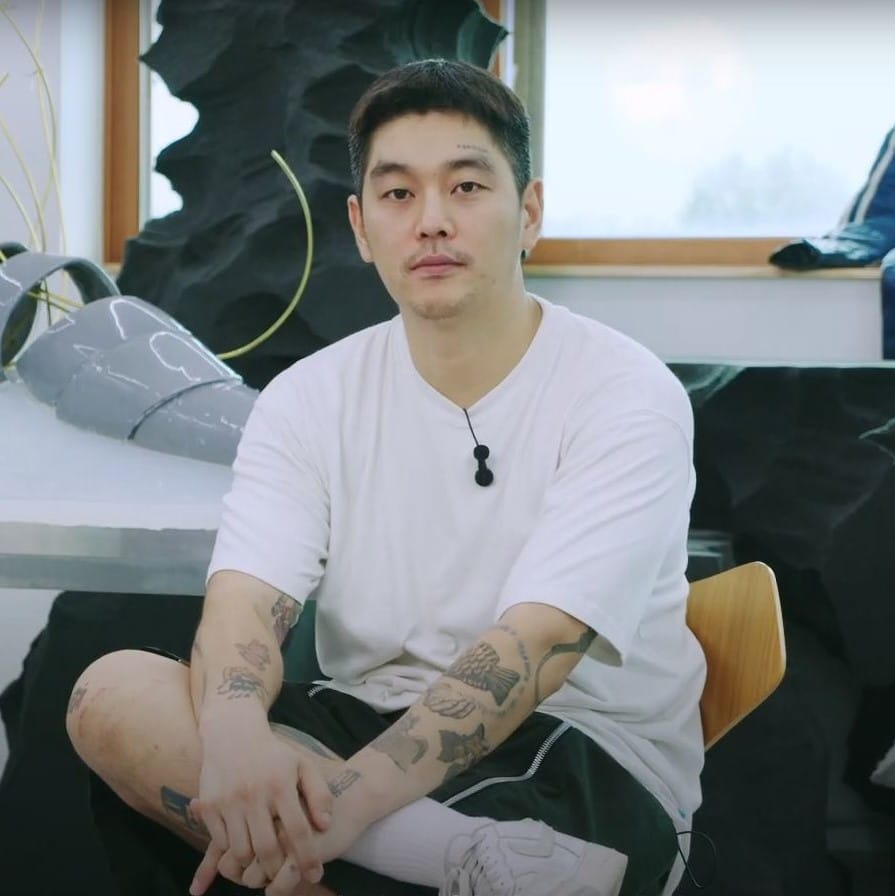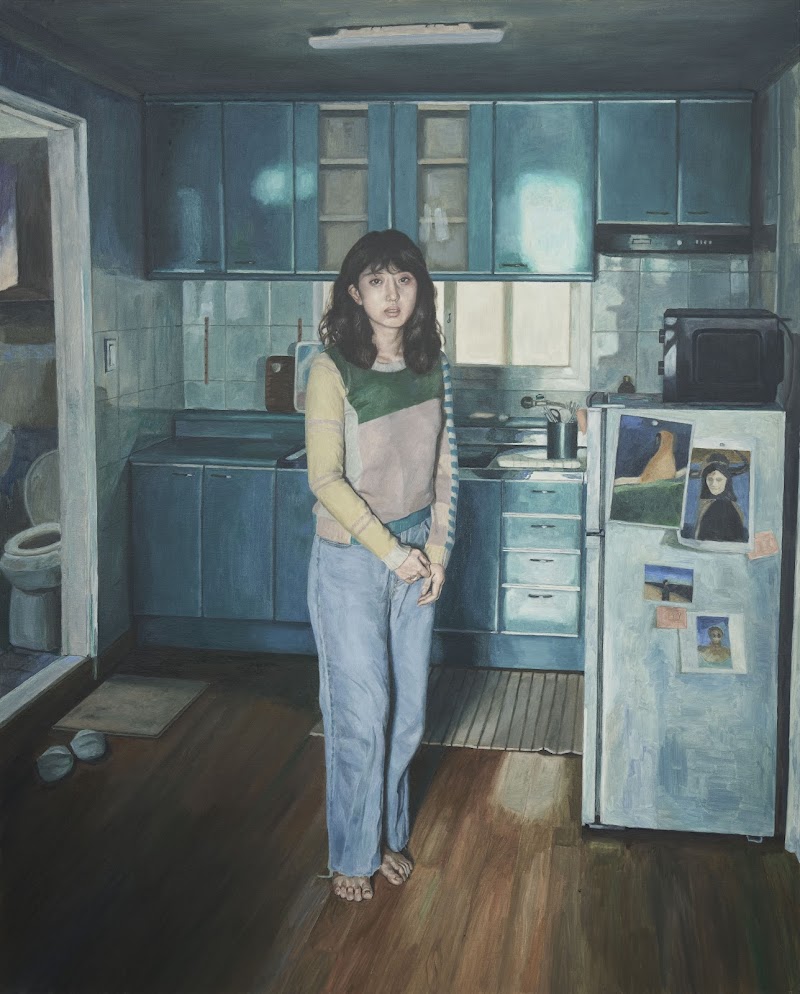The Seoul Museum of Art opened a long-term exhibition, 80 Urban Reality, on May 25, 2023.
The exhibition consists of 21 paintings, photographs, and sculptures that express various concerns about the rapidly changing city of the 1980s.
The GanaArt Collection is one of the major holdings of the Seoul Museum of Art, encompassing Korean realism and Minjung art.
 Exhibition view of “80 Urban Reality (80 도시현실),” Seoul Museum of Art (SeMA). Photo by Kim Sangtae. ⓒ 2023, Seoul Museum of Art.
Exhibition view of “80 Urban Reality (80 도시현실),” Seoul Museum of Art (SeMA). Photo by Kim Sangtae. ⓒ 2023, Seoul Museum of Art.The “GanaArt Collection” is a group of 200 works donated to the Seoul Museum of Art (SeMA) by Gana Art Chairman Lee Ho-jae in 2001. Comprising works of Korean realism and Minjung art from the 1960s to the 1990s that actively reflected Korean social realities, the collection played an important role in building the museum’s identity
SeMA introduced the “GanaArt Collection” through three long-term exhibitions: GanaArt Collection Anthology in 2016, Regrettable Times in 2018, and Herstory Review in 2020.
The Seoul Museum of Art’s new special exhibition, 80 Urban Reality, presents 21 paintings, photographs, and sculptures — 14 from the “GanaArt Collection” and the rest from the Seoul Museum of Art — that express various concerns about the rapidly changing city of the 1980s. The exhibition is on view from May 25, 2023, on the second floor of SeMA’s Seosomun Main Building, which houses the permanent exhibition space for the “GanaArt Collection.”
This exhibition highlights the artists’ perceptions of the urban reality of the 1980s by thematically dividing their works into three categories: “The Other Side of Urbanization,” “Urbanites,” and “Beyond Urban Surroundings: Origin of Life.”
 Exhibition view of “80 Urban Reality (80 도시현실),” Seoul Museum of Art (SeMA). Photo by Kim Sangtae. ⓒ 2023, Seoul Museum of Art.
Exhibition view of “80 Urban Reality (80 도시현실),” Seoul Museum of Art (SeMA). Photo by Kim Sangtae. ⓒ 2023, Seoul Museum of Art.The first section, “The Other Side of Urbanization,” features works that express a critical awareness of the contradictions and absurdities of the urbanization process in the 1980s.
In the second section, “Urbanites,” the works express the lives, identities, alienation, and anxieties of modern people living in the 1980s, allowing the audience to relate to the reality of urbanites on a personal level.
Lastly, “Beyond Urban Surroundings: Origin of Life” introduces the works of Minjung artists who took a critical view of urbanization in the 1980s, identified rural culture as a national identity, and expressed the vitality of the countryside and nature, as well as works by artists who did not participate in the Minjug art movement but expressed the history of the strong people through the vitality of nature.
By borrowing the perspective of artists who lived through the period, the exhibition seeks to comprehend the multilayered reality of Korean society and the individuals who experienced urbanization in the 1980s. Furthermore, it intends to encourage visitors to consider the relevance of the artists’ perspectives and ideas to our current way of life, even after 40 years have passed.
The Seoul Museum of Art Collection
 Exhibition view of “80 Urban Reality (80 도시현실),” Seoul Museum of Art (SeMA). Photo by Kim Sangtae. ⓒ 2023, Seoul Museum of Art.
Exhibition view of “80 Urban Reality (80 도시현실),” Seoul Museum of Art (SeMA). Photo by Kim Sangtae. ⓒ 2023, Seoul Museum of Art.Around 2001, the entry of the “GanaArt Collection” into the museum marked a significant milestone for SeMA. In the 1980s, South Korea experienced rapid economic growth, which resulted in rapid urbanization and improved living standards. It was also a time of globalization, with the country hosting the 1986 Asian Games and the 1988 Seoul Olympics. However, space and institutions for showcasing Korean arts and culture were still lacking.
The Seoul Museum of Art was opened to coincide with the hosting of the 1986 Asian Games and the 1988 Seoul Olympics in response to demands from the Korean art community and society for a contemporary art space, specifically a municipal art museum, in the capital city.
However, in its early years, the museum had a relatively small collection consisting of only a few dozen artworks. It continued to acquire an average of 30 works each year, but with a small budget and limited space, the total number of works in the collection was only 487 by 1999. Moreover, the works collected at this time were mainly works from the Seoul Art Exhibition, which had been held since 1995 with the intention of establishing the museum.
 Exhibition view of “80 Urban Reality (80 도시현실),” Seoul Museum of Art (SeMA). Photo by Kim Sangtae. ⓒ 2023, Seoul Museum of Art.
Exhibition view of “80 Urban Reality (80 도시현실),” Seoul Museum of Art (SeMA). Photo by Kim Sangtae. ⓒ 2023, Seoul Museum of Art.After 1999, a significant transformation occurred in the museum’s collection practices and the number of acquired artworks. The year 1999 marked the inauguration of the museum’s first director, Yu Jun-sang, who was an art expert and an art critic. Under the leadership of the first director Yu, the museum expanded its collection efforts beyond exhibitions and began actively acquiring artworks through its academic staff as a specialized art institution. Notably, in 2000, it purchased more than 230 works, an unprecedented number in the history of the Seoul Museum of Art.
According to SeMA curator Kim Ayoung’s article, “The Collecting History of the Seoul Museum of Art and the ‘GanaArt Collection,’” the acquisitions made under the first director were the first time in the museum’s history that a public museum attempted to diversify its collection by focusing on a single trend in Korean contemporary art history. Since then, the museum has established a collection strategy that aligns with its identity.
Of the 230 works donated at the time, works by representative artists of the 1980s Minjung art movement accounted for 53.4% (123 works) of the total collection. This overlapped significantly with the artists featured in the “GanaArt Collection,” which was donated a year later.
Due to this growing collection, the museum chose to relocate from the former Seoul High School building to the current Seosomun Main Building. Located in the main building of the former Seoul High School, the museum had only about 80 square meters of storage space, making it difficult to attract donations. However, the decision to relocate to the Seosomun Main Building, the former site of the Supreme Court, provided an opportunity for the museum to expand its collection.
Examples include the donation of 93 works by Chun Kyungja in 1998 and the acquisition of 200 pieces from the “GanaArt Collection” in 2001. Both collections also coincided with the reopening of the Seoul Museum of Art in 2002 at the Seosomun building.
GanaArt Collection
 Exhibition view of “80 Urban Reality (80 도시현실),” Seoul Museum of Art (SeMA). Photo by Kim Sangtae. ⓒ 2023, Seoul Museum of Art.
Exhibition view of “80 Urban Reality (80 도시현실),” Seoul Museum of Art (SeMA). Photo by Kim Sangtae. ⓒ 2023, Seoul Museum of Art.The “GanaArt Collection,” donated in 2001, contains works by 46 realist artists, including Minjug artists, encompassing various genres such as Korean painting, Western painting, sculpture, crafts, and prints. In particular, 160 of the works are by artists who actively work with Minjung art.
The acquisition of this collection has significantly enriched the Seoul Museum of Art’s holdings, particularly in the areas of realism and Minjung art, which hold profound significance in the history of contemporary Korean art.
Lee Ho-jae (b. 1954), chairman of Gana Art, has been an art dealer since 1978 and entered the gallery business in 1983 when he opened Gana Art Gallery in Insadong. He has been visiting Grimmadang Min, a gallery run by an art council, since its opening to collect works by Minjung artists. Over time, he gradually expanded his realism series to form the donated “GanaArt Collection.”
 Exhibition view of “80 Urban Reality (80 도시현실),” Seoul Museum of Art (SeMA). Photo by Kim Sangtae. ⓒ 2023, Seoul Museum of Art.
Exhibition view of “80 Urban Reality (80 도시현실),” Seoul Museum of Art (SeMA). Photo by Kim Sangtae. ⓒ 2023, Seoul Museum of Art.When the Seoul Museum of Art discovered the importance of the “GanaArt Collection,” they approached Chairman Lee with the intention of purchasing a few pieces. At that time, Lee decided to donate his personal collection to the Seoul Museum of Art, as he believed that the true value of Minjung art and the artists could only be discovered if they were exhibited and studied as a whole.
“The Seoul Museum of Art told me that they wanted to buy a few pieces from the collection, but I realized that if those few pieces were missing, the whole collection would be disjointed, so I decided to donate them to the public institution where more people could see them without scattering them,” Lee shared in a publication.
The museum’s 2000 acquisition provided a strong link to Lee’s personal collection and was an important step in strengthening the museum’s content. The museum subsequently purchased an additional 45 related works in the same year as the donation of the “GanaArt Collection” to further establish the museum’s identity and enhance its collection, both in terms of quantity and content.























